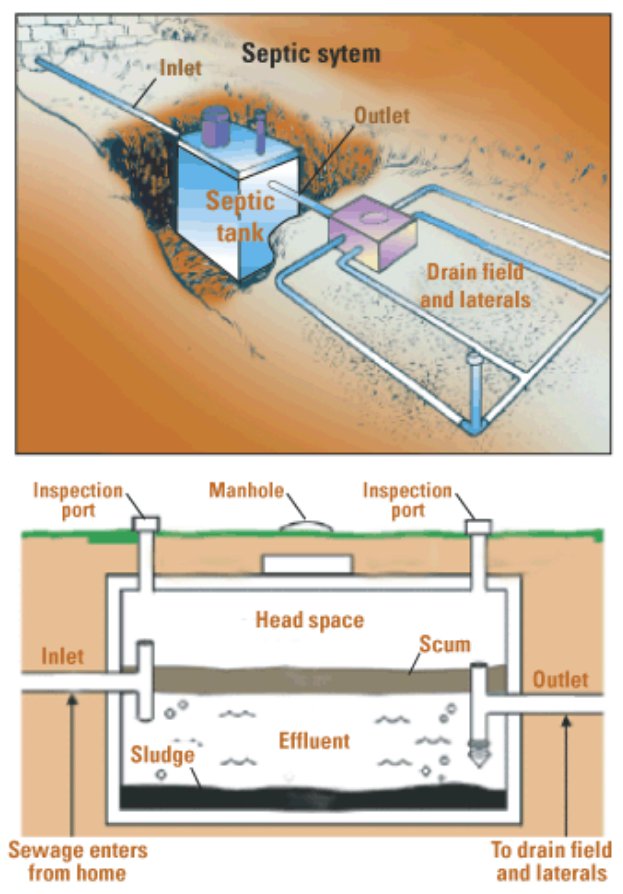Answers to our most frequently asked questions:
What is a septic system?
A septic system is an underground wastewater treatment structure, commonly used in rural areas that are not served by centralized sewer systems. They use a combination of nature and proven technology to treat wastewater from household plumbing produced by bathrooms, kitchen drains, and laundry.
A typical septic system consists of a septic tank and a drainfield, or soil absorption field.
The septic tank digests organic matter and separates floatable matter (e.g., oils and grease) and solids from the wastewater. Soil-based systems discharge the liquid (known as effluent) from the septic tank into a series of perforated pipes buried in a leach field, chambers, or other special units designed to slowly release the effluent into the soil.

What is a soil site evaluation?
A soil site evaluation is sometimes colloquially referred to as a perc test. It is a state regulated environmental investigation to determine what type of septic system the soils on a particular site can support.
How long will the site evaluation last; when does it expire?
A site evaluation is good for 5 years from the date of approval.
When will I know what type of system I will need?
In most cases, the evaluator will know the necessary type of onsite system (i.e. septic system) after field work is completed. However, the site evaluation is not complete nor official until the reviewing agency approves the site evaluation report.
After the field work is completed, a report must be generated per agency requirements and regulations. A scaled site map must also be generated and submitted with the report. The report summarizes site and soil conditions while the map is a visual rendering of site conditions. Timeframes vary for this phase and can be as short as a few days or as long as two weeks; records research or FOIA requests may slow progress.
Once DNREC receives a site evaluation, they have 10 business days to review and approve the submission or contact the evaluator with any questions. Once approved, DNREC will mail the approved report to the owner of the property as listed in county records.
Keep in mind: This is a state-regulated, environmental investigation. There is no standard cookie cutter answer or time frame. We will finish and submit as soon as possible in all cases.
Once approved, a site evaluation is considered public information and anyone can request a copy from DNREC.
OK, I received my report, now what?
Once you receive your approved site evaluation from DNREC you can contact a system designer. If your approved system type is an “Engineered” system or if it requires advanced treatment you will need the services of a DE DNREC Class C Engineer. If your approved system type is a “Gravity” or “Capping Fill Gravity” system you can contact a DE DNREC Class B Designer. The resulting design/ schematic will be used to obtain a permit for installation.
How do I contact DNREC?
DNREC Georgetown – Sussex County Site Evaluations (302-856-4561)
DNREC Dover – New Castle County & Kent County Site Evaluations (302-739-9947)
DNREC Wetlands & Subaqueous Lands – (302-739-9943)
What kind of system did you say I need?
DNREC has developed a useful and easy to understand document that explains the different types of systems permitted in Delaware: Click to download >
